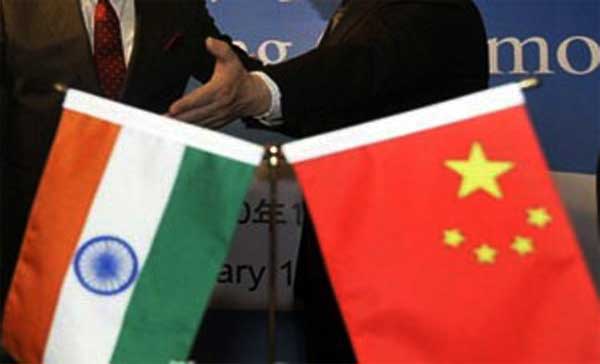Deficit stood at record US$ 48,474 million in 2014-15 FY
Telecom and Power Sector Indulge in Massive Chinese Equipment Imports
By TN Ashok / Economics Editor
India’s Trade Deficit with China – Table shows Export/Import Figures for 03 FY’s –Figures/ Values in USD Million
| Year | Export | Import | Total Trade | Trade Deficit |
| 2012-13 | 13,534.88 | 52,248.33 | 65,783.21 | 38,713.45 |
| 2013-14 | 14,824.36 | 51,034.62 | 65,858.98 | 36,210.26 |
| 2014-15 | 11,935.54 | 60,409.76 | 72,345.30 | 48,474.22 |
| 2015-16
(April/May) Prov Figs |
1,643.89 | 9,685.93 | 11,329.82 | 8,042.04 |
New Delhi, Aug 07 : India’s trade deficit with China in just two months of April and May of the current fiscal year 2015-16 has climbed to a massive US$ 8,042 million , the LokSabha (Lower house of Indian Parliament) was told today.
India’s trade deficit with China, which has been on the rise constantly since 2012-13 , stood at US$ 48,474 million as at the end of the FY 2014-15 , which itself was a substantial rise of over US$ 12,000 million from FY 2013-14 figure of US$ 36,210 million.
Commerce Minister Ms NirmalaSitharaman told the lower house of parliament that the increasing trade deficit with China was primarily attributable to the fact that Chinese exports to India relied strongly on manufactured goods meeting the demand of fast expanding sectors like Telecom and Power.
“Manufactured items catering to India’s power, telecom, and other fast growth sectors contributed a significant proportion towards Chinese imports into India”, she said in reply to questions from former Congress Ministers Kamalnath (Commerce), JyotirdadityaScindia (Power), and MPs Rama Devi, P Kumar and Yogi AdityaNath.
India’s exports to China on the other hand was characterised by primary products, raw materials and intermediate products. In FY 2015-16, 1st two months of April/May, India’s exports to China stood at US$ 1,643.89 million while imports from China stood at a staggering US$9,685.93 million.
Other major items of imports from China comprised computer hardware and peripherals, bulk drugs and intermediates, project goods, fertilisers and chemicals, , consumer electronics, iron and steel products. “These imports feed the growing demands in India for such goods which China, due to variety of reasons, is able to export to India at competitive prices”, Ms NirmalaSitharaman said.
On whether any goods were banned for imports into India from China, Ms Sitharaman said, India had prohibited imports of all dairy products including chocolates, and candies/confectionary/food preparations with milk or milk solids as an ingredientsup to June 23 , 2016. She did not elaborate on the reasons on why these imports from China were banned.
On trade promotion measures taken by the government in recent times, Ms Sitharaman said that only the toys which conform to international standards and accompanied by certificate of conformity were allowed to be imported into India. This was applicable to imports from China also.
Again import of Mobile Handsets without International Mobile Equipment Identity (IMEI) No or with all Zeroes IMEI, and CDMA mobile phones without Electronic Serial Number (ESN) / Mobile equipment identifier (MEID) or with all zeroes as ESN/MEID has been prohibited. This was applicable to imports from China also.
Ms Sitharaman said that the DGAD (Directorate General of Safeguards) had initiated 171 investigations on imports from China and anti-dumping measures were in force on 75 products, as on 16th April 2015.
The Commerce Minister explained that restrictions /banning of imports from China wereconcerned; India and China were both members of the WTO and therefore restrictions placed on imports were subject to the WTO framework. Moreover all imported goods in India were subject to domestic laws, rules, orders,regulations, technical specifications, environmental and safety norms. These regulations are notified from time to time.
The Government, Ms Sitharaman said, took appropriate action in case goods imported from any source were found to violate these regulations. Additionally, the Directorate General (Safeguards) is empowered to temporarily restrict import of products by imposition of additional duty or quantitative restrictions, better known as QRs, if Indian industry was seriously injured or threatened with injury caused by a surge in imports.
Ms Sitharaman said that with a view to boost exports and to maintain balance of trade with India’s trade partners including China, Government has taken a number of measures which inter-alia include market study initiatives to identify specific product lines with export potential, actively taking up issues relating to tariff and non- tariff barriers in bilateral meetings and institutional dialogues, measures to support exports through various incentives and schemes.
With regard to trade with China, India has impressed upon China to recognise the need for reduction in trade imbalance for a long term, , sustainable and harmonious development of economic cooperation between the two countries.
During the 10th meeting of the India-China Joint Economic Group (JEG) at ministerial level, both countries have reaffirmed their determination to expand and diversify bilateral trade and economic cooperation. The two sides agreed to take positive steps toward balancing bilateral trade and addressing the existing structural imbalance in trade that has a bearing on sustainability.
The Commerce Minister said that both countries signed the “Five Year Development Programme for Economic and Trade Cooperation “wherein reduction of trade imbalance over the next five years has been identified as one of the principal objective of trade and economic cooperation between India and China.
